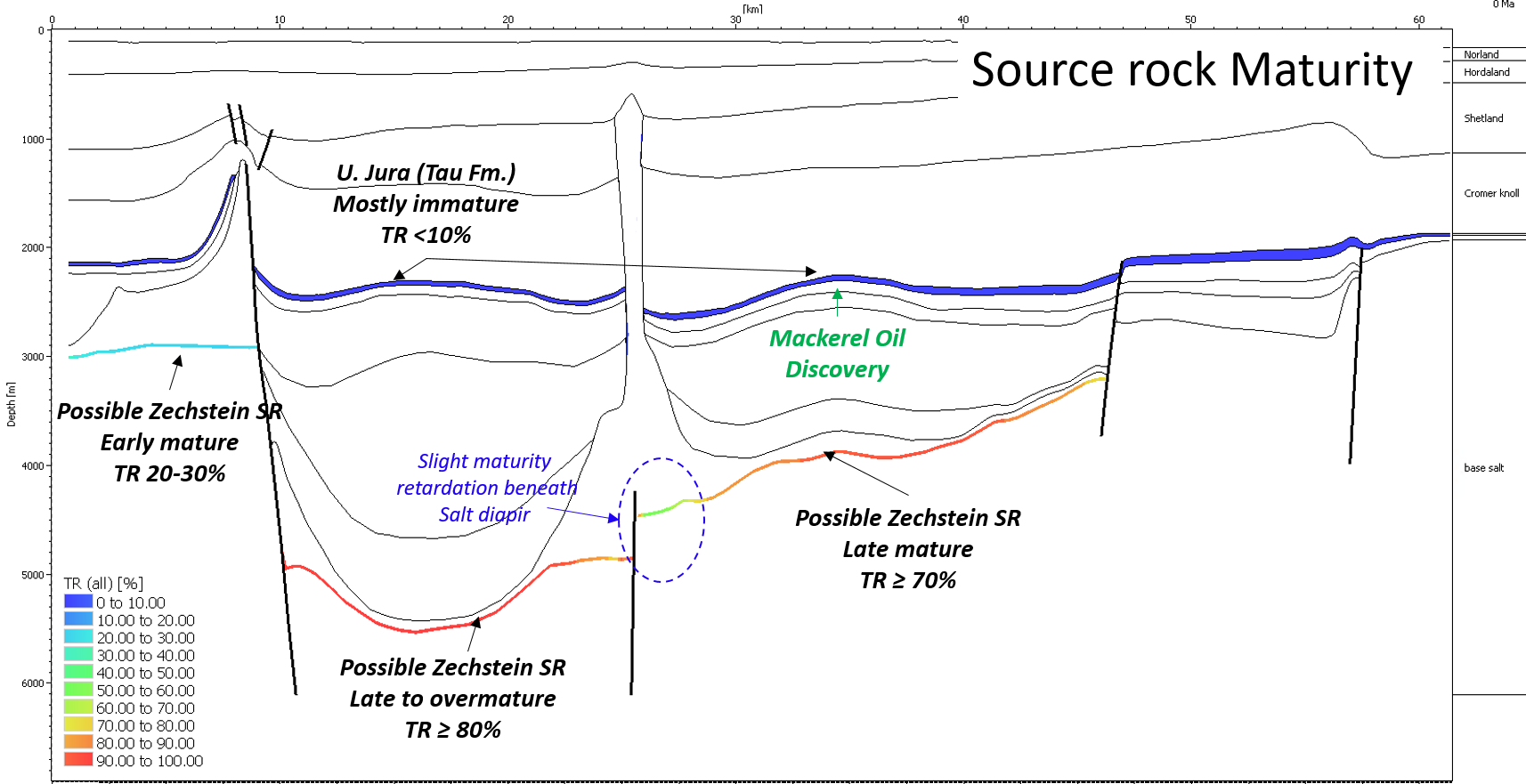Webinar: The Paleozoic petroleum system in the North Sea

Welcome to a webinar arranged by the FORCE Petroleum Systems network. This one-hour talk will be given by Guro Skarstein on behalf of the PaBas consortium, University of Stavanger.
| Date | Time | Duration | Register by | Location |
| 28.04.2022 | 15-16 | 60 Min | 23.02.2022 | Teams |
Bio
Guro has her Bsc and Msc from the University of Stavanger in petroleum geoscience engineering. She is currently taking a PhD in organic geochemistry as part of the PaBas project, investigating the Paleozoic petroleum system in the North Sea.
As the Palaeozoic petroleum system turned out to be very prolific in the southern Gas Basin, North Sea, the industry also wanted to test this petroleum system in the Norwegian North Sea (NNS). Discoveries in Cretaceous chalks (e.g Ekofisk field) and later in Jurassic sandstone reservoirs (e.g Statfjord field) mainly sourced by the Upper Jurassic Kimmeridge Clay equivalent source rocks (i.e. Mandal, Draupne, Tau) proved the presence of the very prolific younger Jurassic petroleum system. Consequently, there was no incentive to explore for Palaeozoic plays. However, the Upper Jurassic Kimmeridge Clay equivalent source rocks are immature over large areas in the NNS and, thus, is considered to have a low potential for hydrocarbons in these areas. Proving the existence of a deeper buried Palaeozoic petroleum system would lead to renewed exploration interest for these areas. Pedersen et al. (2007), Ohm et al. (2012), and Matapour and Karlsen (2018) have reported contribution of Palaeozoic derived oils to some oil fields on the Norwegian continental shelf. The objective of this study is to improve the understanding of the Palaeozoic petroleum system in the Norwegian North Sea. 49 crude oils and 8 oil-impregnated rocks from the Norwegian, Danish and British North Sea have been geochemically analysed in an attempt to identify contributions from Palaeozoic source rocks. The results in this study showed contribution from an atypical source rock facies.
Besides the Kupferschiefer Formation, a second fine-grained unit, potentially organic-rich has been interpreted in the study area in the lower part of the Zechstein Group. Preliminary models for the Egersund basin indicate that maturity levels of these upper Paleozoic organic-rich rocks vary from early mature to late over-mature, but the presence of salt diapirs causes maturity retardation. The formation of salt welding areas during the Triassic, suggests that Evaporitic successions were not continuous barriers for the migration of hydrocarbons from a potential source rock at the base of the Zechstein Group.
How a webinar works
You register as usual through the registration button above. Once you are registered you will get an invitation via email to join this webinar.
FORCE uses Teams Video for this webinar, and has proven to work successfully.
We recomment that everyone joining turn off their camera and microphone when joining.
If you have any questions you can use the chat or wait until the end of the talk.
FORCE seminars have previously been fully booked with waiting lists so you are encouraged to sign up as soon as you know you will attend.
Once you have registered, you will receive an outlook invitation with the Teams link. You will receive the link a few days prior to the webinar.
You cannot forward the link to people who is not registered.
Participation fees:
FORCE members: Free
Non-members: NOK 350,-
University/student: Free
Important information:
You can register as a FORCE member and pay "FORCE member" price if you are an employee of a member company.
All FORCE member companies are listed here.
Payment is made online by credit card. Please note that no refunds will be given after you have signed up.
If you for any reason can not attend the workshop, you are welcome to send a representative, just inform Linn Smerud as soon as there are changes.
Updated: 4/29/2022
